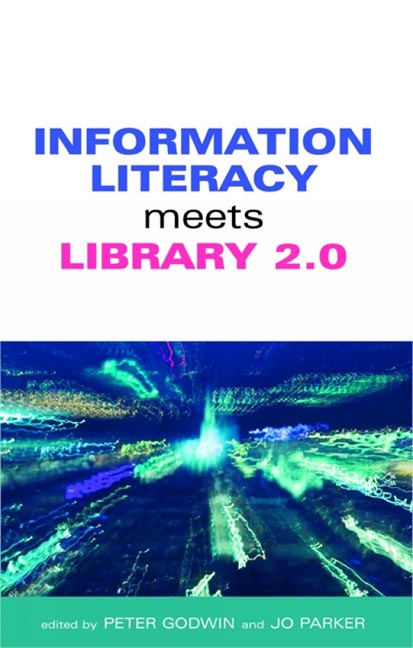Book contents
- Frontmatter
- Contents
- Contributors
- Acknowledgements
- Part 1 The basics 1
- Part 2 Library 2.0 and the implications for IL learning 37
- 3 Educating Web 2.0 LIS students for information literacy
- 4 School Library 2.0: new skills, new knowledge, new futures
- 5 Information literacy, Web 2.0 and public libraries: an exploration
- Part 3 Library 2.0 and IL in practice 75
- Part 4 The future
- Index
5 - Information literacy, Web 2.0 and public libraries: an exploration
from Part 2 - Library 2.0 and the implications for IL learning 37
Published online by Cambridge University Press: 08 June 2018
- Frontmatter
- Contents
- Contributors
- Acknowledgements
- Part 1 The basics 1
- Part 2 Library 2.0 and the implications for IL learning 37
- 3 Educating Web 2.0 LIS students for information literacy
- 4 School Library 2.0: new skills, new knowledge, new futures
- 5 Information literacy, Web 2.0 and public libraries: an exploration
- Part 3 Library 2.0 and IL in practice 75
- Part 4 The future
- Index
Summary
Introduction
Web 2.0 has brought new challenges, and new means of offering services and content. Public librarians are exploring how these tools can be used, always with the ultimate aim of providing the best services to their users, including continuing opportunities for lifelong learning. Now more than ever, library users are virtual visitors as well as physical, so it is even more important that public libraries are ‘virtually’ up to date and present, to serve our users when they are in virtual spaces.
Information literacy is a much broader area in public libraries than in other sectors, with no officially defined or assigned responsibilities (Skov, 2004; Lewis, n.d). However, public libraries are aware of the need to explore IL with our users and as far as we are able, we teach information literacy to our communities. Whether it be through class visits, speaking to local groups, seminars in-house, making learning materials available (e.g. helpsheets on using the catalogue) or just one-to-one instruction, public libraries recognize the important role they play in lifelong learning in their communities.
With my continuing interest in virtual library services as a background, I applied for a Ramsay and Reid Scholarship from the State Library of Victoria, Australia, to undertake a study tour of US public libraries and their virtual services. I was awarded the scholarship in November 2006 and conducted the study tour in April 2007, including in the trip the Computers in Libraries 2007 conference in Washington DC. As I travelled, I posted nightly on my blog Connecting Librarian. Much of what you will read in this chapter comes from that tour and my knowledge of the public library scene in Victoria, Australia.
For those who do not yet have an awareness of Web 2.0 tools, public libraries have an informal responsibility to help them learn. For many in our communities, the public library is their only source of internet access and one of the few accessible resources they have for lifelong learning. Many of our users will learn about Web 2.0 through the resources public libraries provide. This can be through formal classes teaching the use of computers and general or specific desktop and internet applications (including Web 2.0 tools), or through our use of these tools to communicate with, inform and educate our communities.
- Type
- Chapter
- Information
- Information Literacy Meets Library 2.0 , pp. 63 - 74Publisher: FacetPrint publication year: 2008
- 2
- Cited by

